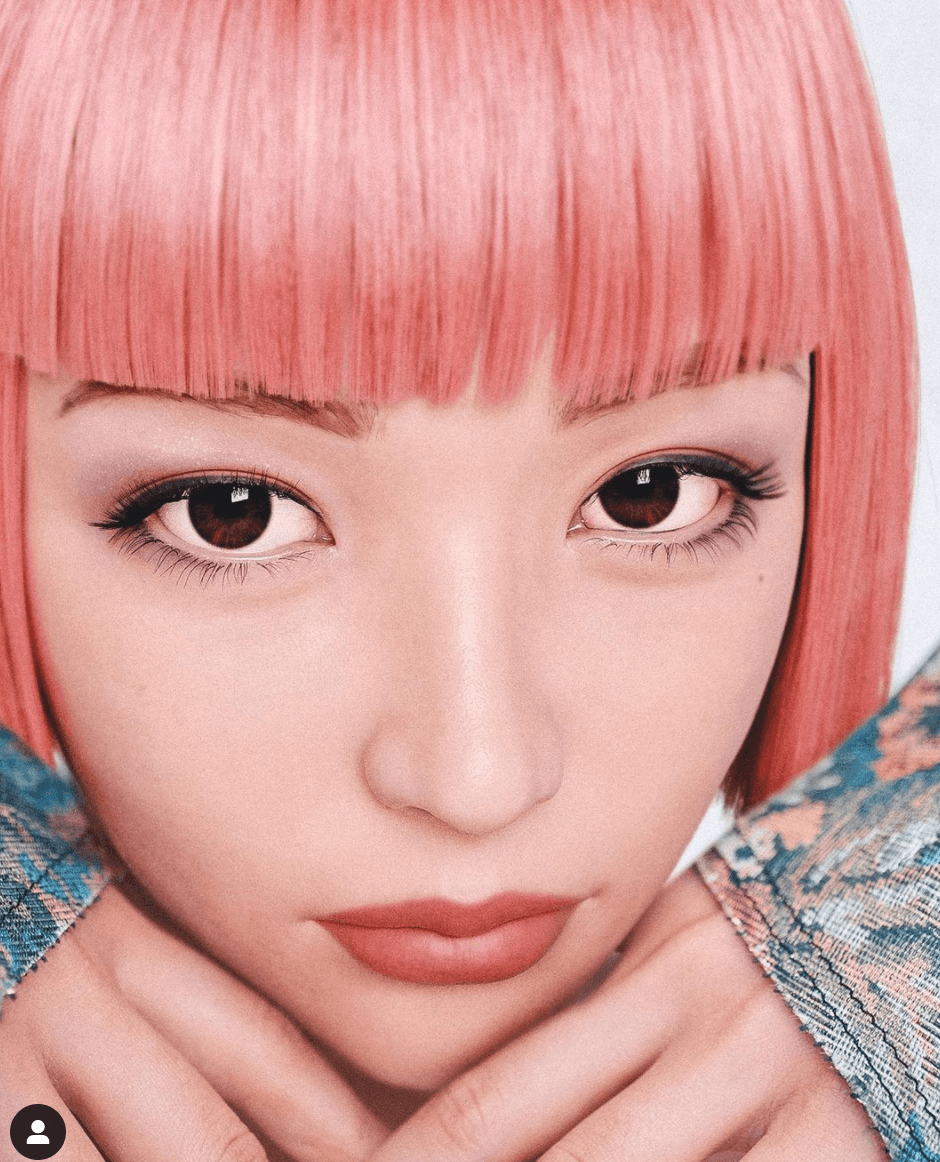Blog • Marketing
Is She for Real? The Rise of the Virtual Influencer

By Shanalie Wijesinghe . Sep.28.2021
Share Article
Virtual influencers hold sway over millions of fans around the world, and brands are taking notice
The online influencer is one of the most effective tools in the beauty business. Their ability to reach large audiences on social media — and more importantly sell to them — is why influencer marketing is expected to be a $13 billion industry in 2021. Even influencers with modest (by current standards) followings can drive business or open up new markets for brands simply by posting about their products. Collaborations are usually designed for social media, but Imma, the influencer pictured above, lived in an IKEA window for three days to show the possibilities of small space living to a younger demographic. Well, it’s more accurate to say she “lived” there, because Imma isn’t real. She’s a virtual influencer.
What are virtual influencers?
Virtual influencers (VI’s) are computer-generated creations who do the same things their human counterparts do. They’re usually fully-realized characters with distinct personalities and back stories. Imma.gram, for example, is interested in art and has a fluffy white dog named Einstein. Some VIs are photorealistic while others aren’t even human, but whatever their appearance, they’re becoming as important for brands as their flesh-and-blood colleagues.
Virtual humans are either really cool or really creepy, depending on your views on artificial intelligence. For brands, they’re highly useful. Take Kenna, the VI created for Essence Cosmetics. Her skin is always perfect. She’ll never be caught on video saying something embarrassing. She’s happy to work ‘round the clock without taking a break. No matter what Essence needs her to do, she’ll do it — and for a fraction of what a human would charge. An influencer with 1 million followers can charge as much as $250,000 for a post, whereas a VI might charge around $10,000.
Lil Miquela and Rae
If you missed the line about “a few lines of code,” (or thought they were a statement about the human condition), you might never realize that the star of this Samsung video isn’t real. Lil Miquela, currently hovering around 3 million followers on Instagram, was created by Brud, a computer software company in Los Angeles. The “19-year-old robot” is one of the most successful virtual influencers, working with premier brands like Prada and Dior. She even has a music video. More importantly, she has her own fashion line, which is why salon owners should keep an eye on the rise of digital models like Miquela.
Two of the most powerful drivers of trends are celebrity and youth culture. Virtual influencers encompass both. It’s not only possible that a virtual character will start a hot new makeup or nail art trend, it’s likely. Only four of the top ten beauty influencers on Instagram currently have more followers than Lil Miquela. And while Miquela is one of the most popular VI’s, plenty of others have the followers necessary to make them potential trendsetters.
Earlier this year, stylist Kim Robinson helped Singapore’s top VI, Rae, ditch her brown ponytail in favor of a chic purple bob. Rae’s fans don’t care that she’s not real, and why should they? They have the same relationship with her as they do with human influencers, liking her posts, watching her reels, and leaving comments. So long as she’s real enough, they’ll be happy to keep on following, and possibly taking inspiration from her new look.
The acceptance of VI’s perhaps says something about how Gen Z views the online space. Whereas previous generations expected authenticity from digital interactions, Gen Z has grown up using digital trickery to alter their appearance. They’ve been puppies on Snapchat and anime characters on Instagram, so is it really that big a deal for someone to be entirely digital? Maybe not.
There are risks to working with a virtual influencer, though. True, they’ll never get caught drunk driving, but fans often feel betrayed when they discover the star they adored isn’t real. Lil Miquela, Imma, and Rae are all very clear about their digital nature to avoid that kind of backlash. Humanoid virtual influencers can also suffer from “uncanny valley” syndrome, where they look just real enough to seem human, but are still artificial enough to make viewers feel uncomfortable. Brands have to consider all of that and more when they evaluate whether using a VI is a good fit for them. More often than not, working with a human is the better choice for them.
The future
Your beauty business probably doesn’t have to worry about the influence of virtual celebrities any time soon. VI’s are more involved with fashion brands at the moment, giving design houses like Prada and Calvin Klein a cool edge that appeals to a new audience. Hair is also notoriously difficult to render in CGI, so it will probably be a while before there’s a VI known for their styles. Humans will still be the ones setting the tone for makeup, nail art, lashes, brows, and hair.
For now, at least.
Boulevard was built to help your business achieve profitability at scale without losing an inch of sanity. See for yourself! Get a free demo today.
Sign up for weekly blog updates.
